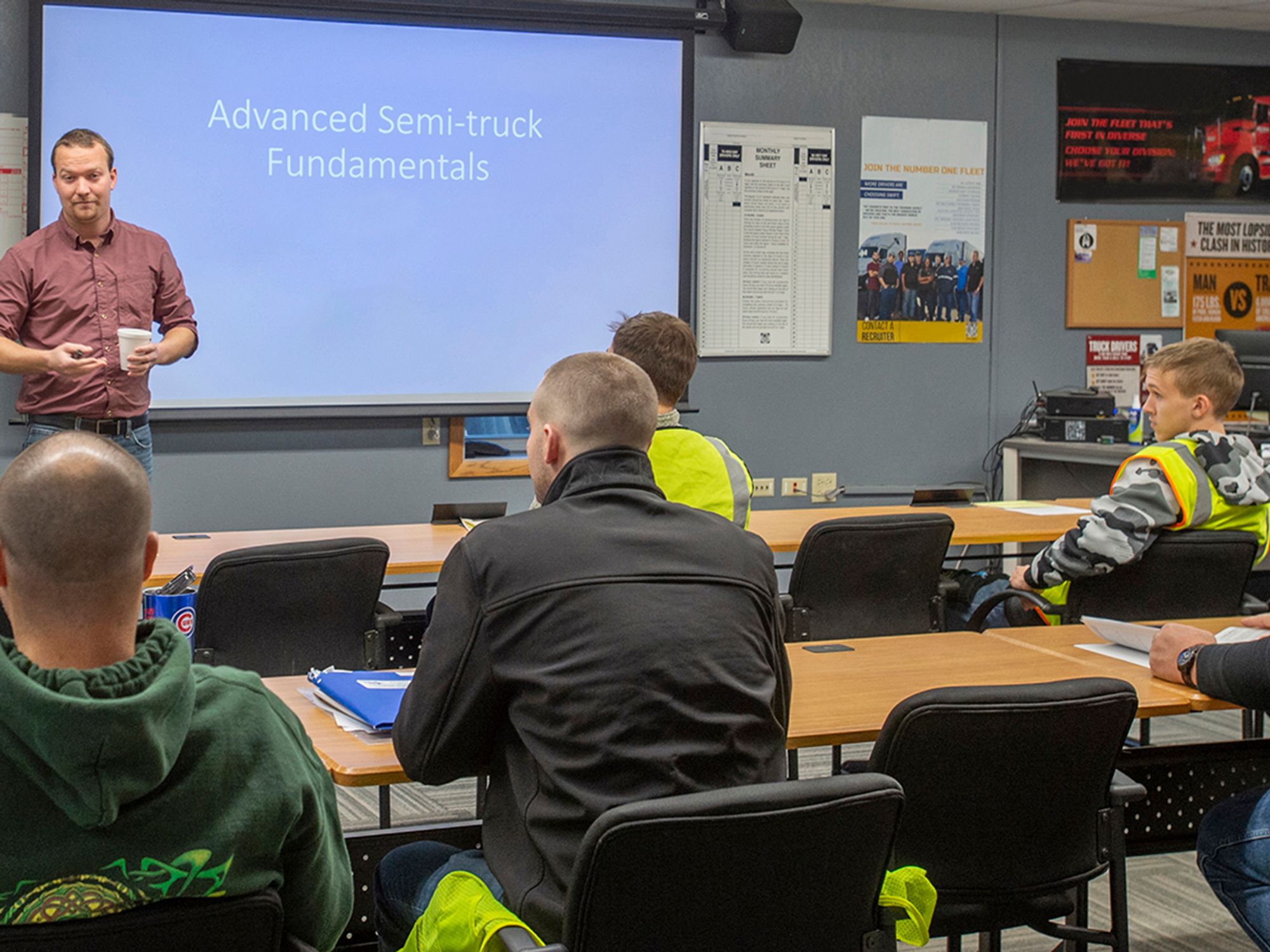InstituteCommercial drivers license CDLFleet SafetyEntry-Level driver trainingEntry-level driver trainingTransportationIn Depth (Level 3)Focus AreaEnglishAnalysisCommercial drivers license CDLUSA
Theory instruction
['Entry-Level driver training', 'Commercial drivers license CDL']

- Five areas of theory instruction are specified for entry-level drivers seeking a Class A or Class B CDL.
There is no required minimum number of instruction hours for theory training, but the instructor must cover all topics set forth in the curriculum.
The curriculum addresses five areas of instruction. Instruction must cover all topics under the five areas of instruction:
- Basic operation
- Orientation
- Control systems/Dashboard
- Pre-trip inspections and post-trip inspections
- Basic control
- Shifting/Operating transmissions
- Backing and docking
- Coupling and uncoupling (Class A only)
- Safe operating procedures
- Visual search
- Communication
- Distracted driving
- Speed management
- Space management
- Night operation
- Extreme driving conditions
- Advanced operating practices
- Hazard perception
- Skid control/recovery, jackknifing, and other emergencies
- Railroad-highway grade crossings
- Vehicle systems and reporting malfunctions
- Identification and diagnosis of malfunctions
- Roadside inspections
- Maintenance
- Non-driving activities
- Handling and documenting cargo*
- Environmental compliance issues*
- Hours-of-service requirements
- Fatigue and wellness awareness
- Post-crash procedures*
- External communications*
- Whistleblower/Coercion*
- Trip planning*
- Drugs/Alcohol*
- Medical requirements*
*Instruction on this topic is not required for drivers upgrading from a Class B CDL to a Class A CDL.
A written assessment must be used to determine the driver-trainee’s proficiency for each unit of instruction. The driver-trainee must receive an overall minimum score of 80 percent on the theory assessment.
